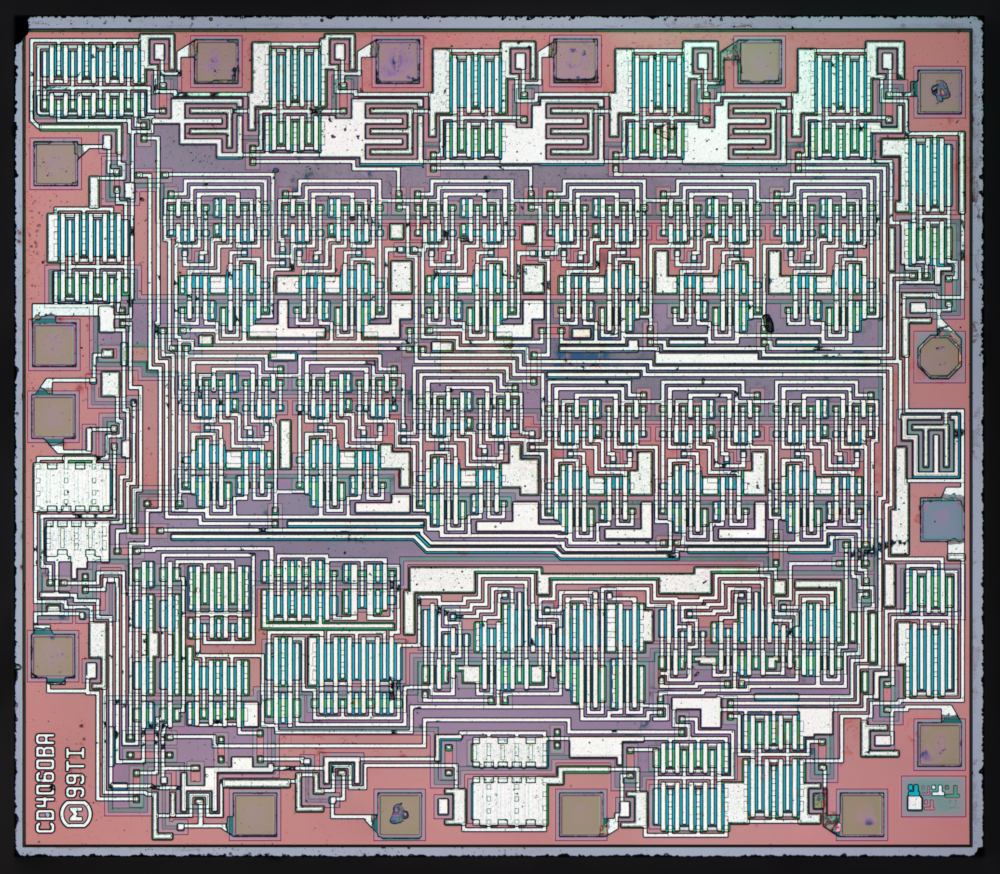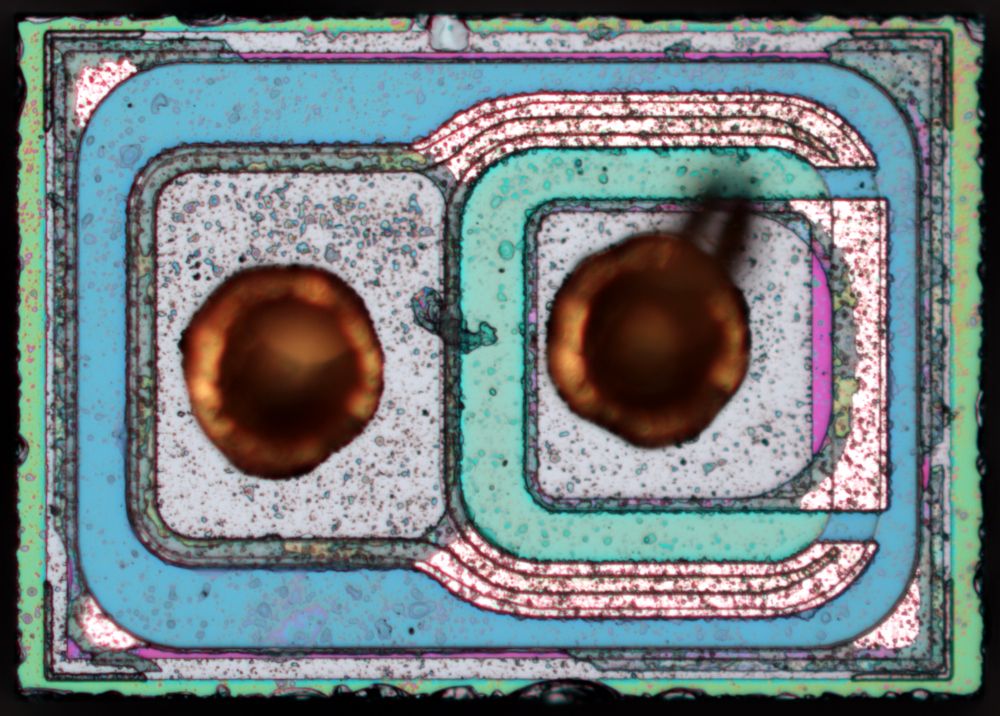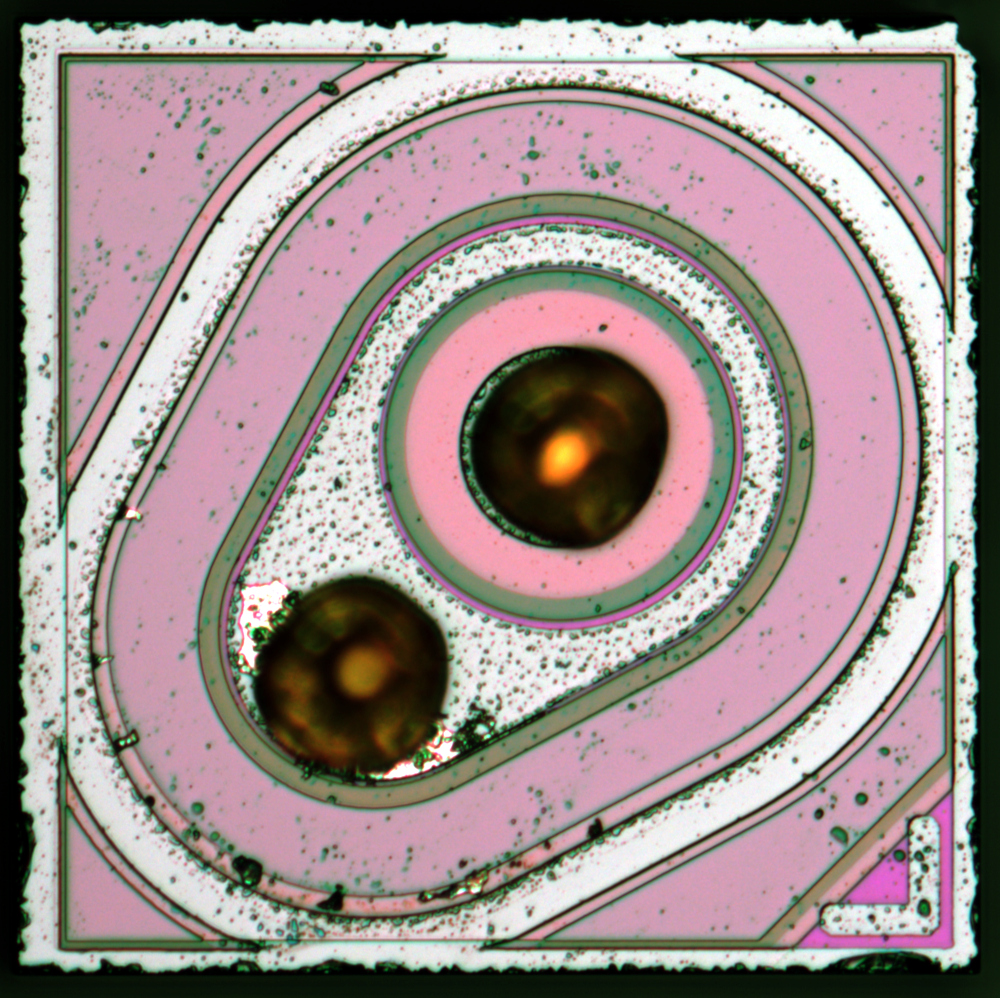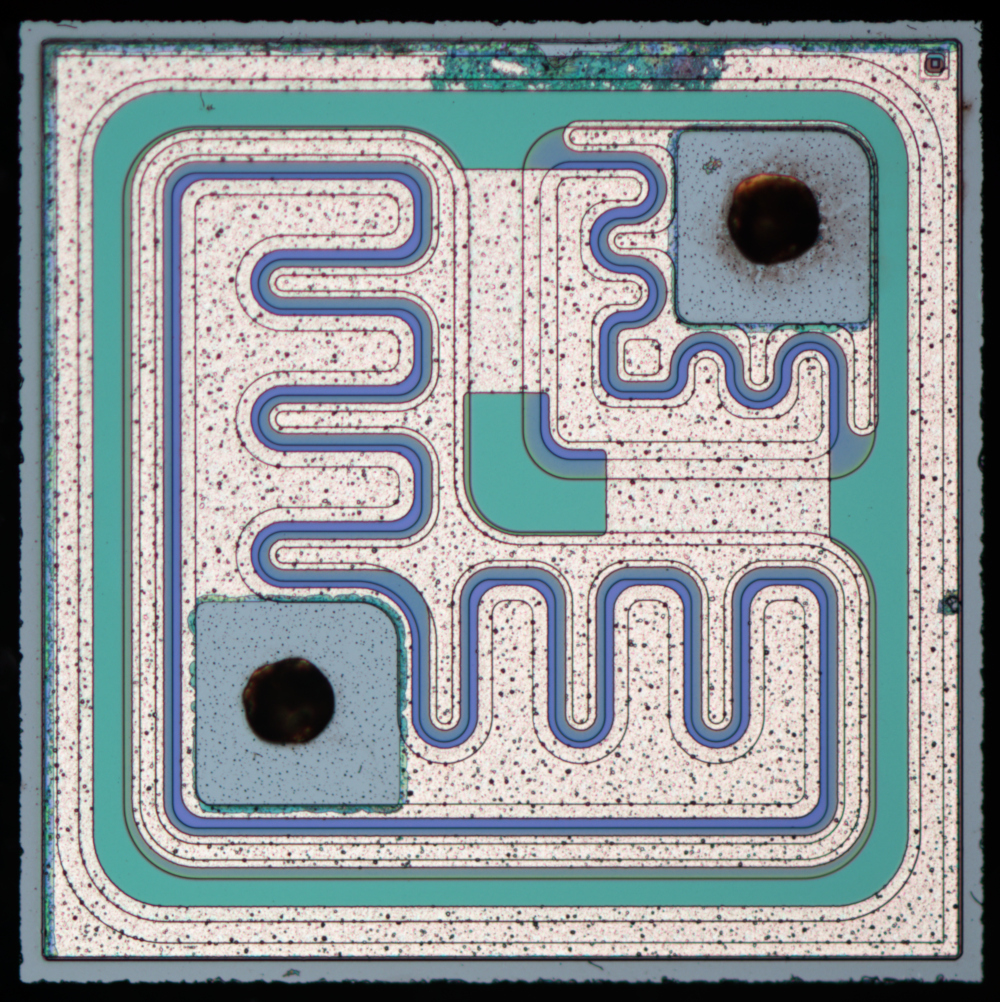September 2, 2018
National Semiconductor LM3909 - analog led flasher : weekend die-shot
Quite a bit different from CMOS led blinkers we've seen in the past. Die size 935x733 µm.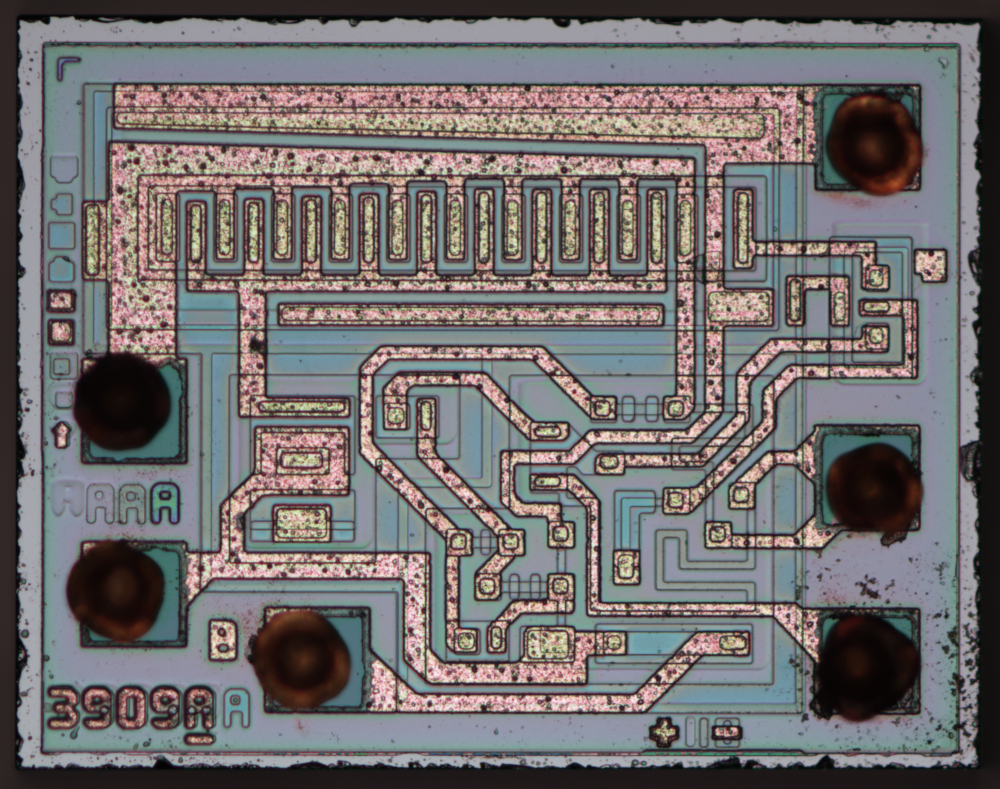
August 27, 2018
August 25, 2018
August 23, 2018
Linear LT1115 - low-noise opamp : weekend die-shot
Linear LT1115 is a low-noise, low distortion opamp with 10V/µs slew rate. Largest integrated capacitors area on an opamp die we've ever seen.Die size 2861x2532 µm.
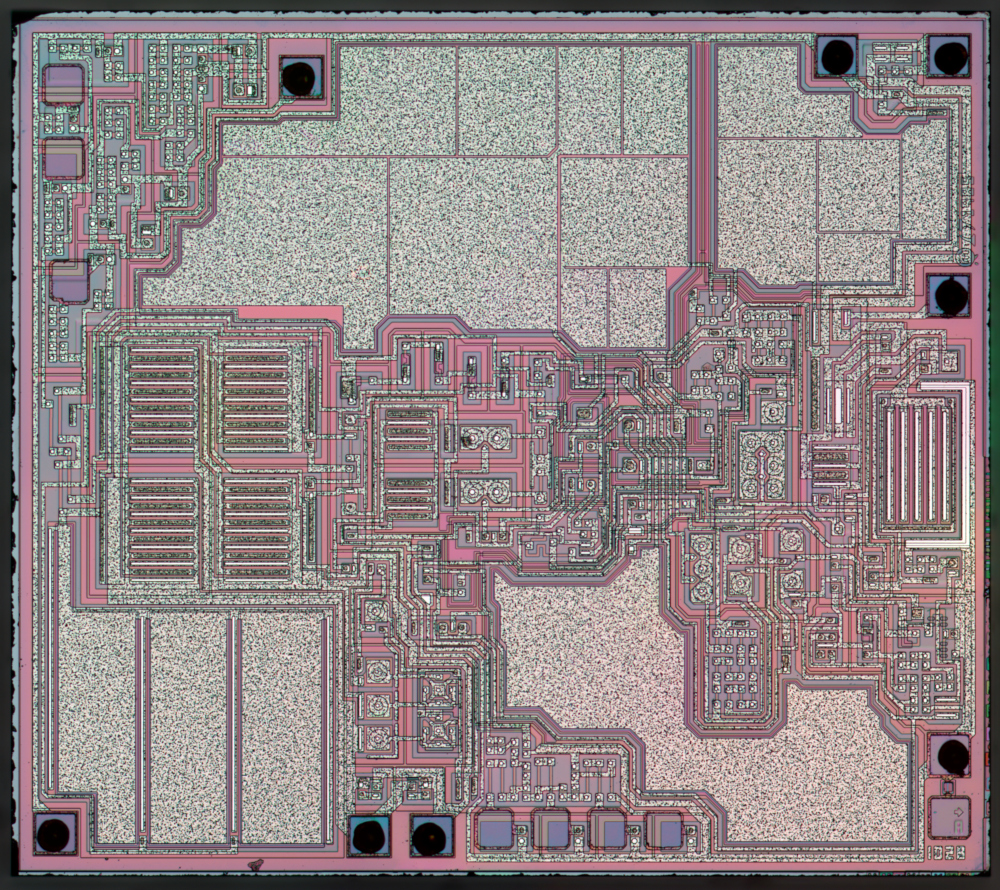
August 19, 2018
August 13, 2018
Phillips NE564N - PLL : weekend die-shot
This is another early and widely used PLL. Unlike CD4046 it can operate at whopping 50MHz.Die size 2332x1519 µm.
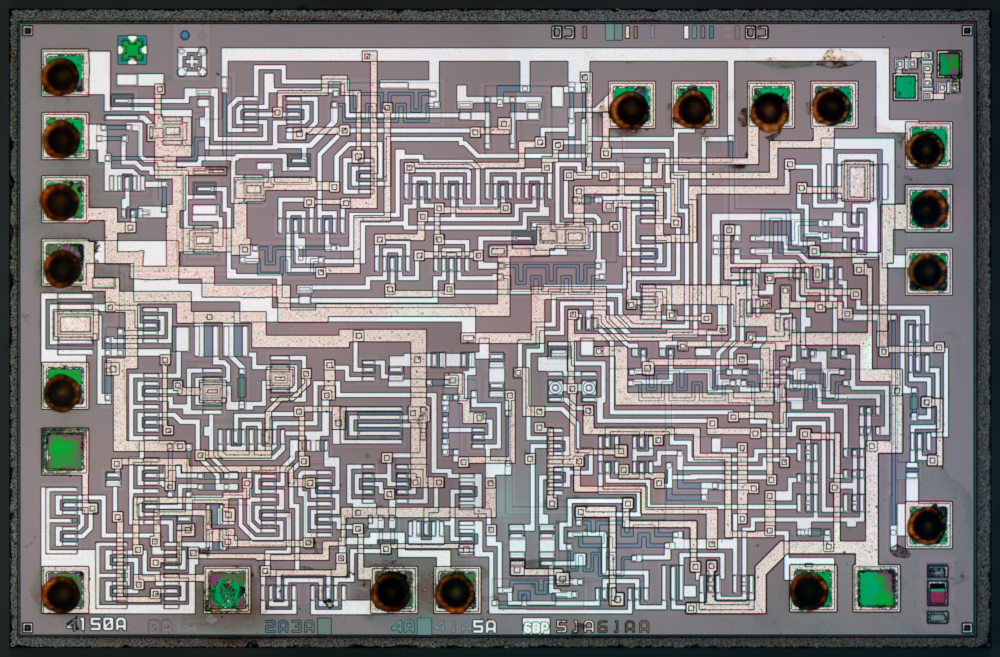
July 29, 2018





